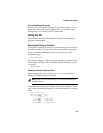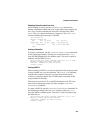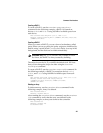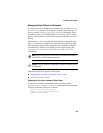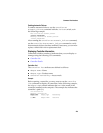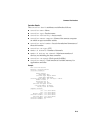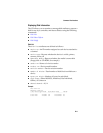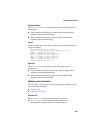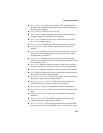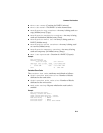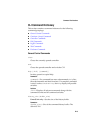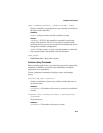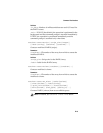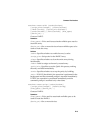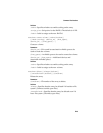
D-13
Command Line Interface
■
Root Special File
(Unix/Linux only)—File associated with
the array and created by the OS after array creation. Appears in
the Num Label column.
■
Array Number
—ID of an array (0 to 63).
■
Array Label
—Name assigned to an array. Not automatically
assigned. Appears in the Num Label column.
■
Array Type
—Defines an array as a volume, RAID 0, RAID 1,
etc., or a reconfigured array.
■
Creation Date
—Month, day, and year the array was created.
■
Creation Time
—Hour, minute, and second the array was
created.
■
Total Size
—Number of bytes in an array. The size of an array
is the size of the available space when the array was created,
reconfigured, or extended.
■
Stripe Size
—Number of bytes in a stripe (amount of data
written to a partition before the I/O data stream switches to the
next partition/array).
■
Read Only
—Reports whether an array is read-only accessible.
An array can be set to read-only if not in use by an application.
■
Read/write
—Reports whether an array is read-write accessible.
■
Lock
—Reports whether an array is locked into volatile memory
space on the currently open controller.
■
Resident File System
—Type of file system, if any, that resides
on an array. Appears in the Usage column.
■
Multipartition Container
—That a file system resides on a
multipartition array. Appears in the Usage column.
■
UNIX opened
—There is a mounted file system on the array.
■
Unknown File System
—There is an unknown file system on the
array.
■
Unmapped Containers
—The array is unusable and cannot be
mounted.
■
Phantom Container
—The RAID controller software cannot
configure the array or the array is offline.
■
Valid Container
—The OS recognized the array and there has
been a query (such as mount, fdisk, read, or write) on the array.



